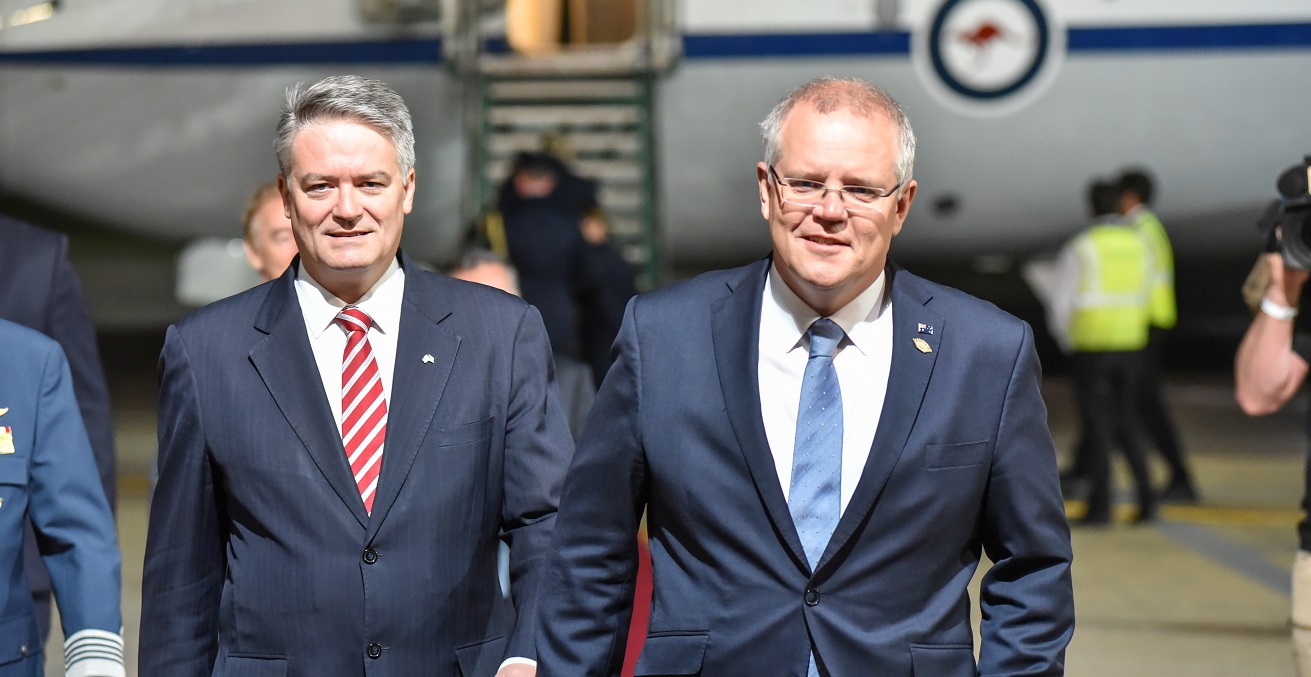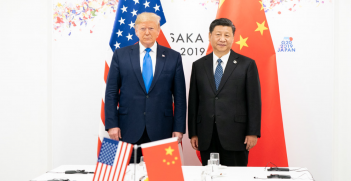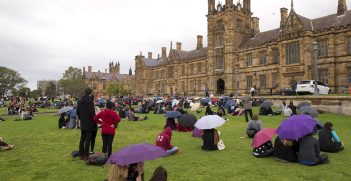The Choices That Will Decide Australia’s Economic Recovery

Australia’s economy is at a crossroads. Whether its recovery is fast or slow will depend on the decisions made by Australian politicians.
“The most successful economy in the rich world” is how The Economist described the Australian economy in late 2018. How quickly times have changed. Since those words were published, annualised GDP growth has fallen from 2.1 percent to -6.2 percent. Inflation fell from 1.7 percent to ‑0.4 percent. Investment growth went from around zero to -5.5 percent. The only thing that went up was unemployment, rising from 5 percent to 6.8 percent, before heading to a forecast 10 percent by the end of the year, with millions more underemployed.
COVID-19 has had a big impact on the Australian economy, but it’s wrong to say that Australia’s economy was healthy before the pandemic. Productivity growth had flatlined, wage growth had stalled, investment was stagnant, GDP growth was well below average, inflation was persistently below target. The bold economic reforms of Australia’s past were nowhere to be seen. Australia’s politicians demonstrated an inability to develop coherent, long-term policies to address the multitude of challenges facing the economy, from climate change and energy policy to declining productivity, stagnating living standards, and rising inequality.
How will Australians respond to the recession? It is hard to predict. More than half of the adult population were either not born or were children when Australia had its last recession. The critical question is how long it will take for unemployment to come back down and for the economy to return to normal. More than ever, the answer to these questions will depend on the decisions made by Australian policymakers. Five areas stand out.
The first is health. Australia’s economic recovery hinges on its ability to eliminate the virus or suppress it to a manageable level until a vaccine is widely available. Claims that Australia’s economy would be performing well if there were no government lockdowns are wrong. Sweden had substantially less onerous lockdowns than Australia. As a result, not only did Sweden have 24 times as many deaths as Australia per capita, it suffered a larger economic contraction as well: -7.7 percent as at the June quarter (annualised), compared to Australia’s ‑6.2 percent. Health and economic outcomes are intimately linked. Addressing Australia’s economic crisis means first addressing its health crisis.
The second is openness. A fifth of Australia’s GDP comes from exports. More than $4 trillion of Australia’s capital stock has come from foreign investment. Two thirds of our population growth — which has driven GDP growth in recent years — comes from immigration. The sectoral picture is starker. More than 70 percent of Australian agricultural produce goes overseas. More than 80 percent of mining resources go overseas and more than 50 percent of tourists are from overseas, to say nothing of the international student numbers in Australia’s university sector, Australia’s third biggest export. Some temporary closing of economies during COVID-19 is unavoidable, but some would like to see it on a permanent basis. There are calls for Australia to reduce its openness to trade, investment, and people, particularly with respect to China. This is deeply misguided. These calls ignore the catastrophic cost to Australia’s living standards, forcing whole industries into crisis, resulting in countless job losses and insolvencies. Such calls ignore the role of international integration in promoting peace and cooperation between countries, and ignore the role that Australia’s flexible markets, exchange rate, and domestic institutions play in protecting Australia from international shocks. Australia’s future prosperity is in no small part dependent on its ability to reopen to Asia, particularly to China.
The third is fiscal policy. Closed borders, domestic lockdowns, rising unemployment, and shrinking investment necessitates a bigger government. Scott Morrison and state premiers have shown a willingness to do what needs to be done. Gross debt has risen sharply from 28 percent of GDP in 2018-19 to a forecast 45 percent by July 2021. This is entirely appropriate and necessary to protect Australians from the devastating long-term consequences of prolonged recession. The question is what comes next. Premature withdrawal of income supports like JobKeeper and JobSeeker and a failure to implement medium-term fiscal stimulus will mean a prolonged period of high unemployment and economic weakness. Australia does not have a debt problem.
The fourth policy area is monetary policy. Australia’s central bank governor is on track to finish his term without having once achieved his inflation target. This need not be the case. The Reserve Bank of Australia’s (RBA) quantitative easing program has focused on buying government bonds with a three-year maturity. It could expand its program to cover government bonds with different maturities or do what other countries have done and purchase other long-term assets, including corporate bonds and stocks. At the extreme, the RBA could directly finance government spending. All these policies have drawbacks. Australia’s corporate bond market is shallower than those in comparable countries. Buying stocks risks the RBA picking winners while directly financing government spending is normally reserved for when the government lacks fiscal space or faces exorbitant borrowing costs, neither of which is true for Australia. But these criticisms ignore the cost of inaction. The RBA’s hesitation isn’t that these policies wouldn’t work, it is that such policies are institutionally uncomfortable, blurring the line between the RBA, private markets, and the government.
While premature fiscal withdrawal and insufficient monetary stimulus will hurt the economy, neither will provide the sustainable, long-term growth Australia needs. This is why the fifth area is structural reform – fixing the tax and welfare systems, cracking down on cartels and monopolies through competition reform, reforming industrial relations, and liberalising trade. Australia needs new sources of growth, particularly given the pre-COVID-19 weakness of productivity, wages, and investment. The government’s proposed tax cuts lack ambition and are a poor form of stimulus. They are poorly targeted to those most impacted by COVID-19. They will worsen inequality, will be mostly saved not spent, and will worsen the low growth, low inflation, and low investment challenges plaguing the economy. Combining them with ambitious structural reforms is an opportunity to make tough reforms more palatable to the Australian public. Failing to do so is a missed opportunity.
In sum, what happens next to the Australian economy will depend on the decisions made by Australian policymakers in each of these areas. If the government chooses a more closed Australia, and a more anti-China Australia, if it chooses to withdraw stimulus in a misguided attempt to reduce debt and deficits, it if shirks its responsibility to implement reform as the Reserve Bank shirks its responsibilities to lift inflation, then the outlook is dire. Prolonged high unemployment and stagnating living standards await. But if the government builds on the international openness that has underpinned Australia’s prosperity, deepens its engagement with Asia, better manages the relationship with China, maintains expansive fiscal and monetary policy until unemployment falls while implementing bold reforms to boost long-term growth, Australia will once again be the “miracle economy.”
History has repeatedly shown that economic extremes, if left to fester, become political extremes. There is little time to waste.
Adam Triggs is the Director of Research at the Asian Bureau of Economic Research, ANU, and a non-resident fellow at the Brookings Institution in Washington, D.C.
This article is published under a Creative Commons Licence and may be republished with attribution.





